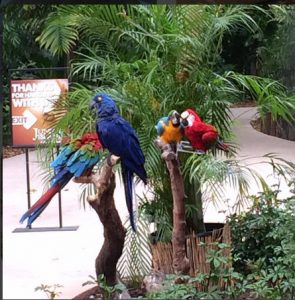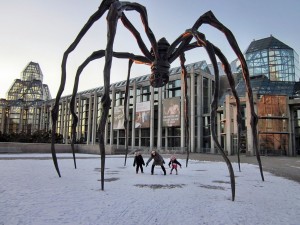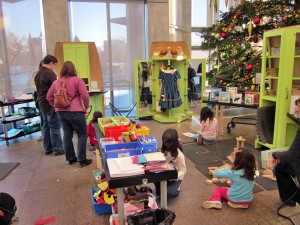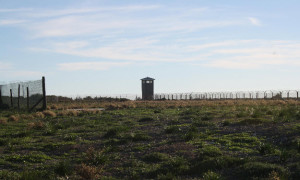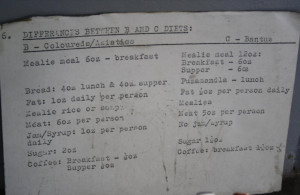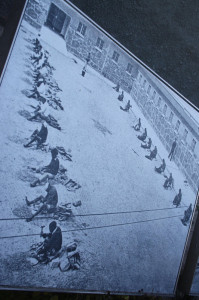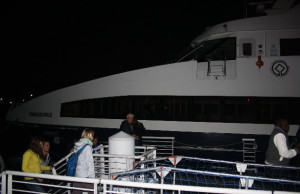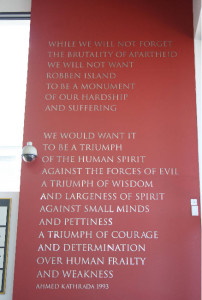Tag Archive
activity architecture art artist building Canada children city CostSaver downtown drive i-95 entertainment Europe event exhibit family festival Florida food fun historic History landmark local Museum music Nature New Zealand Ontario roadtrip sculpture Seattle show sights sightseeing tour tourist Trafalgar travel travelblogger view Washington Washington State water world
US: Walterboro, SC – WWII African American Pilots, Coke Collection and SC Heritage at Colleton Museum & Farmer’s Market
Colleton Museum & Farmer’s Market was re-purposed from a former grocery, the Colonial Food Store, and it explores the history of Colleton and is home to thousands of objects from Colleton County and South Carolina.
The outside window offers a peek into inside exhibits, like the old time general store, the story of the Tuskegee African American WWII pilots, animals of the ACE basin, a postcard and Coca Cola collection and local silhouette artist Canew Drew’s cutouts. We marveled at the shoe-fitting Adrian X-ray fluoroscope machine which showed you, your Mom and the salesman how the bones of your feet fit into your shoes.
You can watch a video about rice plantation culture and how the black slaves brought the techniques and tools that made their masters rich. See if you can find the snake, turtle and fish painted into the floor. There’s a gift shop and a yummy cafe. The range of exhibits are free and open to the public.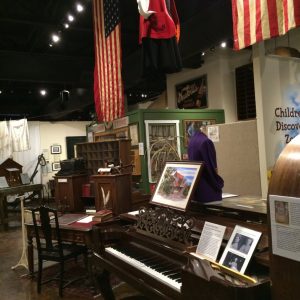
Location: 506 E. Washington St, Walterboro, SC 29488
Hours: Tues 12-6 pm, Wed-Fri 10-5 pm, Sat 10-2 pm
Tel: 843-549-2303
colletonmuseum.org
For Regional Accommodations, Restaurants & Attractions:
walterborosc.org
US: Jacksonville, FL – Hear the Big Cats Roar at Caddy Shack Ranch Wildlife Sanctuary
You’ll find lions and tigers at the Catty Shack Ranch Wildlife Sanctuary. This amazing non-profit facility is dedicated to the rescue and care of endangered big cats, providing them a safe, loving, forever home.
Run completely by volunteers, this sanctuary allows you to get an up close and personal with the rescued big cats: lions, tigers, leopards, cougars and bobcats. Learn about their habitat, their personalities and the stories behind why they have found refuge at the sanctuary. 
Since their inhabitants are mostly nocturnal (big cats can sleep up to 20 hours a day), you will most likely appreciate the nighttime tour the most. The resident cats wake up after dark and this is when they are fed. At 7:30 PM, you will get to watch over 600 pounds of meat distributed throughout the sanctuary. During these tours, be prepared to hear the big cats roar “loudly” – lions can be heard up to five miles away.
Daytime tours and nighttime feeding tours of Catty Shack Ranch are available but only on select days, so you’ll need to check the website for the most recent schedule. These tours are the primary source of raising funds with 100% of proceeds going to their residents.
Treat your family to a very unique, informative, exciting experience. Animal lover’s will appreciate how well these residents are loved and cared for at this very special retirement home.
Location: The Catty Shack Ranch, 1860 Starratt Rd, Jacksonville, Florida 32226 USA
Dates: open only on select days, please check website
Hours: Daytime Tours 1 – 4 pm, Night Feeding Tours 6 – 8 pm
Tel: 904- 757-3606
cattyshack.org
For Regional Accommodations, Restaurants & Attractions:
visitjacksonville.com
US: St Marys, GA – Wild Horses Graze on Georgia’s Cumberland Island
A short ferry ride transports you to the treasured, pristine Cumberland Island National Seashore, the largest and southernmost barrier island in Georgia, offering visitors over 17 miles of secluded, white, sandy beaches.
Preserved and protected for future generations, Cumberland Island National Seashore includes a designated wilderness area, undeveloped beaches, historic sites, cultural ruins, critical habitat and nesting areas. Walk on the footsteps of early natives, explorers, and wealthy industrialists.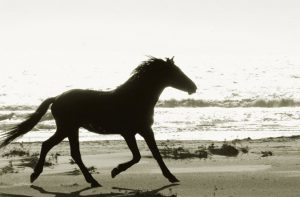
You can’t explain Cumberland, you experience it. Time moves to the rhythm of nature. On this National Seashore, it is the animals that are the inhabitants and people are only visitors. The majestic sweep of deserted sandy beach is dotted with shells and usually deserted, except for the wild horses roaming at will. The dramatic slope of the dunes is a constant work in progress, sculptured by the wind and sea. The inland’s, majestic live oak and palmetto forests provide shelter for the horses, deer, turkey, alligator, armadillo, mink and a tremendous variety of coastal birds.
You’ll find campsites, hiking trails and first-come-first-serve bike rentals on the island. There are no amenities on the island beyond the restrooms and water fountains. You should bring lunch and water bottles to refill.
The visitor’s center in St. Mary’s, Georgia is the gateway to Cumberland Island. Here you can get tickets for the ferry over to the Island, as well as information about camping permits on the Island.
Location:Mainland Visitor Center, 113 Saint Marys St, GA 31558
Hours: Visitor Center 8 – 4 pm
Tel: 912-882-4335
nps.gov/cuis/index.htm
For Regional Accommodations, Restaurants & Attractions:
visitkingsland.com
US: St. Marys, GA – Wild Horses Graze on Georgia’s Cumberland Island
A short ferry ride (passengers only) transports you to the treasured, pristine Cumberland Island National Seashore, the largest and southernmost barrier island in Georgia, offering visitors over 17 miles of secluded, white, sandy beaches.
Preserved and protected for future generations, Cumberland Island National Seashore includes a designated wilderness area, undeveloped beaches, historic sites, cultural ruins, critical habitat and nesting areas. Walk on the footsteps of early natives, explorers, and wealthy industrialists.
You can’t explain Cumberland, you experience it. Time moves to the rhythm of nature. On this National Seashore, it is the animals that are the inhabitants and people are only visitors. The majestic sweep of deserted sandy beach is dotted with shells and usually deserted, except for the wild horses roaming at will. The dramatic slope of the dunes is a constant work in progress, sculptured by the wind and sea. The inland’s, majestic live oak and palmetto forests provide shelter for the horses, deer, turkey, alligator, armadillo, mink and a tremendous variety of coastal birds.
You’ll find campsites, hiking trails and first-come-first-serve bike rentals on the island. There are no amenities on the island beyond the restrooms and water fountains. You should bring lunch and water bottles to refill.
The visitor’s center in St. Mary’s, Georgia is the gateway to Cumberland Island. Here you can get tickets for the ferry over to the Island, as well as information about camping permits on the Island. 
Location:Mainland Visitor Center, 113 Saint Marys St, GA 31558
Hours: Visitor Center 8 – 4 pm
Tel: 912-882-4335
nps.gov/cuis/index.htm
For Regional Accommodations, Restaurants & Attractions:
visitkingsland.com
US: Miami, Florida – Jungle Island’s Parrots
Parrots enjoying themselves at Jungle Island near Miami. There are about 1,800 birds here, in addition to the tigers, vultures, flamingos, kangaroos, lemurs, hippos and a kookaburra. You can get very close to the animals, and you may even wind up with a parrot on your shoulder.
Canadian Museum of Nature is Museum of Fun
If you are heading out to Ottawa to enjoy our nation’s capitol, leave some time to explore the Canadian Museum of Nature. It’s the perfect place for all ages of the family to enjoy themselves. The brainy kids (or adults) can soak up extensive details about nature while the playful gang can pull levers or turn knobs in a deep sea sub,  learn on many touch screens, or even dance around in front of the endothermy camera checking out their colorful “hotspots”.
learn on many touch screens, or even dance around in front of the endothermy camera checking out their colorful “hotspots”.
Everyone is awed by the the 19.8-metre blue whale skeleton in the Water Gallery but keeping going further in. All the way in the back are many interactive games for young and old alike: make believe areas for the wee ones, a board game along a wall, animal jigsaw puzzles on touch screens, word games, etc.
Gawk at the dinosaur fossils or walk amongst the fleshed-out dinosaur creatures for photo ops with kids. In the Vale Earth Gallery swoon over the 1200 gorgeous minerals, rocks and meteorites. Our 5 1/2-year-old couldn’t get enough of the joystick which controls a huge earth or the button to start the volcano.
Sure there’s a full size mammal gallery but the 11, 8 and 5 1/2 year-olds all stayed longer in the small Nature Live space where they oogled the cases of walking stick bugs in different camouflage colors and thicknesses. How many of you have come face to face with a tarantula? Then they listened intently as a docent showed fossils which were indigenous to Ottawa.
If you have time there are two 3D movies, “Prehistoric Planet 3D and Micro-Monsters 3D” (both too scary for the 5 1/2 -year old) but our gang liked the interactive museum more.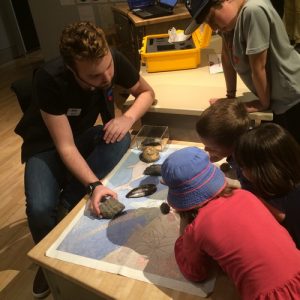
The famous Bird Gallery, with one of the most extensive collections of Canadian birds in the world re-opened June 1. A special exhibit on now is Ultimate Dinosaurs June 11-September 5 and then upcoming is Reptiles: The Beautiful and the Deadly, October 6-April 2 .
A brand new Arctic Gallery will be unveiled on June 23 which is set to explain how the arctic is changing, including plants, animals and people of the area plus scientific research. Outside, three new ecozones will be shown off on June 17 including a woolly mammoths and an “iceberg”.
I’d like to give a thumbs up to the friendly security guards who answered questions informatively and helped to point out nearby bathrooms and water fountains.
Canadian Museum of Nature, a Beaux Arts building, was our first national museum, completed in 1912. Trivia buffs should note that this building served as home to Canada’s House of Commons and Senate following the fire that destroyed the Centre Block of Parliament in 1916.
Location: 240 McLeod St., Ottawa
Phone: 613-364-4021
www.nature.ca
Canada: Children Love National Gallery of Canada in Ottawa
Most people would not think of taking children to an art museum. However, The National Gallery of Canada in Ottawa offers Artissimo, one of the best children’s programs I have come across – and at an amazingly reasonable price of only $24 for 2 adults and 3 children. They try to teach kids about the art through different senses.
– First up was the creation of Art Buddies, toys (like dolls or animals) which can be found in paintings. These exact reproductions are given to the kids to hold, and then they are pointed to galleries where they can try to find them in a painting. Our Marguerite Charlotte doll had golden curls intertwined with green ribbon, and was holding a little blue bird in her hand.
– Second fun activity was the touch box which the child wears around his neck. They can put their hands in the sides (like a muff) and feel textures inside. Each box relates to a painting which has these textures in it; they have to guess what they are feeling and what in the painting represents it: a feather, lace, fur, picture frame, etc.
– Thirdly, was a real hit for ages 4-10. In Sounds Like Art, they are given headphones which play sounds. In each gallery, they have to find a painting which would relate to that sound: water, a crying baby, horses’ hooves, crackling fire.
For completing these games, the kids are rewarded with collectors’ cards of the paintings.
– Lastly there is an arts and crafts area set up in the most beautiful setting possible – the Great Hall with its soaring windows. While they are creating their works of art, you (and they) can oogle the magnificent panoramic view of Parliament Hill, the Gatineau Hills and the Ottawa River.
The children also enjoyed finding the surprise garden (from above and at ground level), the ceiling water window in the lobby, the “sound sculpture” in the chapel and, of course, Maman, the giant spider outside. And yes, there is also the fabulous collection of art. We spent 4 hours there easily.
Location: 380 promenade Sussex Drive, Ottawa ON K1N 9N4
Phone: 800-319-ARTS
Hours: Tues-Sun 10-5 (closed Mon Oct 1-Apr 30)
www.gallery.ca www.beaux-arts.ca
South Africa: Visiting Robben Island, UNESCO World Heritage Site
By Adele Shapiro – March 2012.
As a child I used to visit Robben Island with my grandmother. Her son, my uncle, was a warder in the prison services there. The name “Robben”, despite sounding very English – is in fact the Dutch for “Seal” – and the name derives from the extensive seal colony that was found on the Island by the first Dutch settlers.
We would go to the Cape Town docks and from there, take a boat ride to the island, where we would spend the day with family. I was vaguely aware that there were bad people on the island, and that it was a prison…. but little did I know then of the role it was to play in South Africa’s later history. Years passed and now as an ad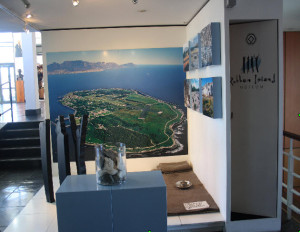 ult, I found myself revisiting the place where “the bad people” were kept, only now I realized that some were not so bad after all.
ult, I found myself revisiting the place where “the bad people” were kept, only now I realized that some were not so bad after all.
I bought a ticket for the tour some days before the trip, (advisable, as they fill up quickly) and took time out to examine the display at the Nelson Mandela Gateway at the V&A Waterfront in Cape Town.
There were many photographs of the political dissidents, the calls for boycotts, the anti-apartheid marches and there was also a prison cell that had been reconstructed for the purposes of the exhibit. I strongly recommend a visit to this exhibit before going to the island as it helps to contextualize the experience.
The trip began, as in times of old, with a boat ride from Cape Town docks, but this time instead of my uncle meeting us, we had a pleasant tour guide who told us jokes on our bus trip, whilst pointing out various sights on the island. Our bus was parked under a sign that said: “Welcome. We serve with pride.” I wondered if that sign had been there when Robben Island had been a prison as it was so sharply incongruous to the environment. I hoped not.
 Robben Island has had a long history. First as a lighthouse to warn ships of the VOC, the Dutch East India Company (Verenigde Oostindische Compagnie), of the rocks that surround the island. But since the end of the 17th century, Robben Island has been used for the isolation of (mainly) political prisoners. The island was also used at various times as an animal quarantine station, a home for slaves, a leper colony, a hospital for the mentally ill and as a prison for French Vichy prisoners of war.
Robben Island has had a long history. First as a lighthouse to warn ships of the VOC, the Dutch East India Company (Verenigde Oostindische Compagnie), of the rocks that surround the island. But since the end of the 17th century, Robben Island has been used for the isolation of (mainly) political prisoners. The island was also used at various times as an animal quarantine station, a home for slaves, a leper colony, a hospital for the mentally ill and as a prison for French Vichy prisoners of war.
First we saw the Leper Graveyard and then house where Robert Sobukwe (Founder of the Pan Africanist Congress) had been kept separate from the other political dissidents.
It seems that Robert Sobukwe had special status in the prison. He was kept in solitary confinement at all times, but allowed certain privileges including access to books, being permitted to study, being permitted to wear civilian clothes, and being permitted bread. His children were allowed to visit him and they had their own bedroom in his “house”. Robert Sobukwe was convicted of incitement for demonstrating against and defying the Pass Laws, and in particular, for his connection to the PAC demonstration (although he was not present) which became known as the Sharpeville Massacre.
The notorious Pass Laws required black people to carry a pass book at all times when outside their compounds or designated areas, and were designed to limit severely the movements of the non-white population. This legislation was one of the dominant features of the country’s apartheid system.
Sobukwe was sentenced to three years in prison. After serving his sentence, he was moved to Robben Island for internment, as a new law called the General Law Amendment Act had been passed, which permitted his imprisonment to be renewed annually at the discretion of the Minister of Justice. This procedure became known as the “Sobukwe clause” and Robert Sobukwe was the only person whose imprisonment was extended under this clause. Imagine how special one has to be in order for parliament to pass a law just for you!
We also learned from our tour guide that the American politician and Pastor, Andrew Young, had fostered Sobukwe’s children in the USA, while Sobukwe had been in prison.
Our tour continued to the lime quarry where the political prisoners had worked. At the entrance to the quarry we saw a small cairn, and learned its history. In February 1995, (the landmark change of government was in 1994), about one thousand former political prisoners gathered again on Robben Island, but this time as free men, and to mark the occasion, each one placed a small stone from the quarry in a pile, making a small memorial to their years of hardship and struggle.
As we continued on our bus ride, we were shown a church, a hospital, a school and a mosque, and realized that far beyond our expectations, the island had supported a whole community. We duly arrived at the prison and tumbled out of the bus for our tour of “the real thing”. We were excited and filled with high spirits and I wondered for a moment where my heart would have been had I not been a tourist.
Inside we found grey walls. It was cool at midday; it was clear that at midnight it would be very cold. The communal cells were large and each had a bathroom attached.
Here we met our prison tour guide, Derrick Basson, a former political prisoner who served time on Robben Island for sabotage.
Derrick was very patient, humble and remarkably, not bitter. He answered all the insensitive questions calmly and without anger. In addition he explained the grading of the prisoners by race and also the diets that varied due to the racial classification of each prisoner. One of the curious facts he told us was that black prisoners were not given bread. As they were Africans their “natural” food was considered to be maize meal. The mixed race prisoners were allowed bread as they were considered to be more western or European and less African. The black Africans were also not allowed jam or syrup. I suppose you do not need jam if you have no bread.
Then I remembered that Robert Sobukwe, in spite of being black, was allowed to have bread, and it struck me that this must have been because he had been a university professor, and since this is a very “European” and non-tribal job, maybe he was considered eligible to receive bread.
Derrick further explained how prisoners slept on mats on the floor and how 5 blankets had not been enough to keep them warm at night. I suddenly remembered an interview with a former Alcatraz inmate who spoke of the extreme cold and of how prisoners had learned to sleep with only their elbows and knees touching the floor, hands locked behind the head. I became very grateful for my duvet.
We were told that in the beginning the political prisoners had been kept with the ordinary criminals, but later on, they were, thankfully, given their own “wing” and kept together. They came to call this place “The University” as they learned many things from each other and many of them also obtained degrees while in prison.
Derrick then took us to a yard where the prisoners had chopped rocks and turned them into stones, day after day in the sun. They were told that these rocks were used for roads built on the island, but no one seemed to know if this was true or not.
We were then taken to Nelson Mandela’s cell. Mandela was a militant anti-apartheid activist, as well as the co-founder and leader of the armed wing of the African National Congress (ANC), Umkhonto we Sizwe or “Spear of the Nation”. He was arrested in 1962 and convicted of sabotage, (amongst other charges), after he admitted to manufacturing explosives and acts of public violence, and was sentenced to life imprisonment. Mandela served 27 years in prison, 18 of these on Robben Island. After his release, he served as President of South Africa from 1994 to 1999.
My very first impression was of how small the cell was. No, not small, tiny. And then I thought that at least he could stand up and lie down in it, but not much more than that. At least it was larger than the dreadful box that I had heard was used in China. But there was no toilet. Just a metal bucket with a lid. At least a lid. And no tap, so no water. And if you are thirsty during the night, what should you do? And of course there was no electrical socket and no radio nor TV. And all I could think of was 27 years. TWENTY SEVEN YEARS! There was no door handle on the inside. The door was only operational from the outside, not unlike a cage. I remembered that Nelson Mandela had once remarked that the hardest and most traumatic experience he endured whilst on Robben Island for all those years was that he never ever saw, or even heard, a child. Can you imagine that? Now he insists on being photographed with children, whenever possible.
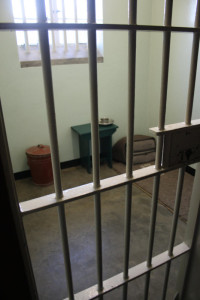 And then it was all over. We walked out to the yard, Derrick took us to the exit, and we said our goodbyes.I felt an odd mixture of elation and depression. Very happy that I had been to a UNESCO World Heritage Site of such importance, happier still that it was no longer a prison, and most happy that I was leaving. Yet also depressed and ashamed because of the suffering this place represented.
And then it was all over. We walked out to the yard, Derrick took us to the exit, and we said our goodbyes.I felt an odd mixture of elation and depression. Very happy that I had been to a UNESCO World Heritage Site of such importance, happier still that it was no longer a prison, and most happy that I was leaving. Yet also depressed and ashamed because of the suffering this place represented.
Duly subdued, we gratefully returned to our boat to ponder our feelings of inspiration and shock, enjoy the beautiful sunset cruise back to Cape Town, and watch a school of dolphins at play in the sea.
Remember when planning a visit to Robben Island, that the tours don’t always run on time. There was no snack bar on the boat. Our boat was 1 hour late in leaving Cape Town harbour and then we were rushed through our tour, which was a pity as there was too little time for questions.
A suggestion would be to make no appointments after the visit as the timing can vary, and also, take a snack pack. A sun hat and sun block are also good ideas.
Ferries depart (supposedly) at 9am, 11am, 1pm and 3pm, weather permitting, from Nelson Mandela Gateway, at the V&A Waterfront in Cape Town. Tickets costs are R230 for adults and R120 for children (U/18). Telephone: +27 (0)21 413 4200
Fax: +27 (0)21 419 1057
Canada Ottawa: Museum of History
The swooping architecture of the building and jaw-dropping 17 metre-high domed ceiling of Canada Hall are visions you will not easily forget after you have visited the newly named Canadian Museum of History (was Canadian Museum of Civilization), which covers Canadian life from AD 1000 to 2000.
From now until Sept 28, 2014, you can enjoy the informative exhibit about Snow and the ingenious ways in which Canadians have adapted to difficult winter conditions, from sleighs to snow removal. You can participate in a fun quiz at the end.
The museum is a playground for all, as the Children’s Museum takes the kids on travels around the world – including a passport to stamp in each country. All kinds of imaginative play from driving a bus, motorcycle, ship or camel to running a shop, putting on a puppet show, living in a pyramid, moving heavy boxes using a winch, or booking a trip can all be tried out.

In the main galleries, visitors see a Viking family arriving in Newfoundland around AD 1000, discover New France through a farmhouse, inn, hospital, shoemaker’s shop and visit a voyageur camp, a lumber camp, a Métis campsite, British military living quarters and a Maritime shipyard. There’s a stroll past shops along the main street of a small town in late 19th-century Ontario.
Learn about life in a turn-of-the-century prairie railway station and yard, a Saskatchewan grain elevator, an authentic Ukrainian church, a Chinese hand laundry and a 1920s Alberta oil derrick. You can even sit in Yellowknife’s Wildcat Cafe, the town’s first restaurant and a popular gathering spot for prospectors, bush pilots, miners and trappers.
If you love animals, leave time for the up close and personal movie, Kenya 3-D about a safari through Africa.
Location: 100 Laurier St., Gatineau, Quebec K1A 0M8
Phone: 819-776-7000 or 800-555-5621
www.civilization.ca
